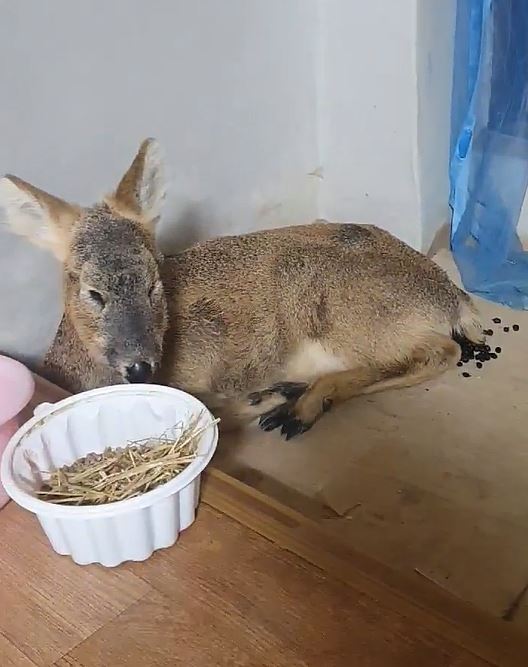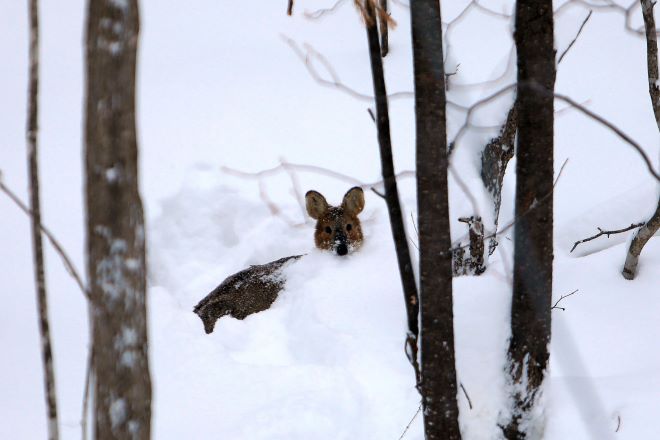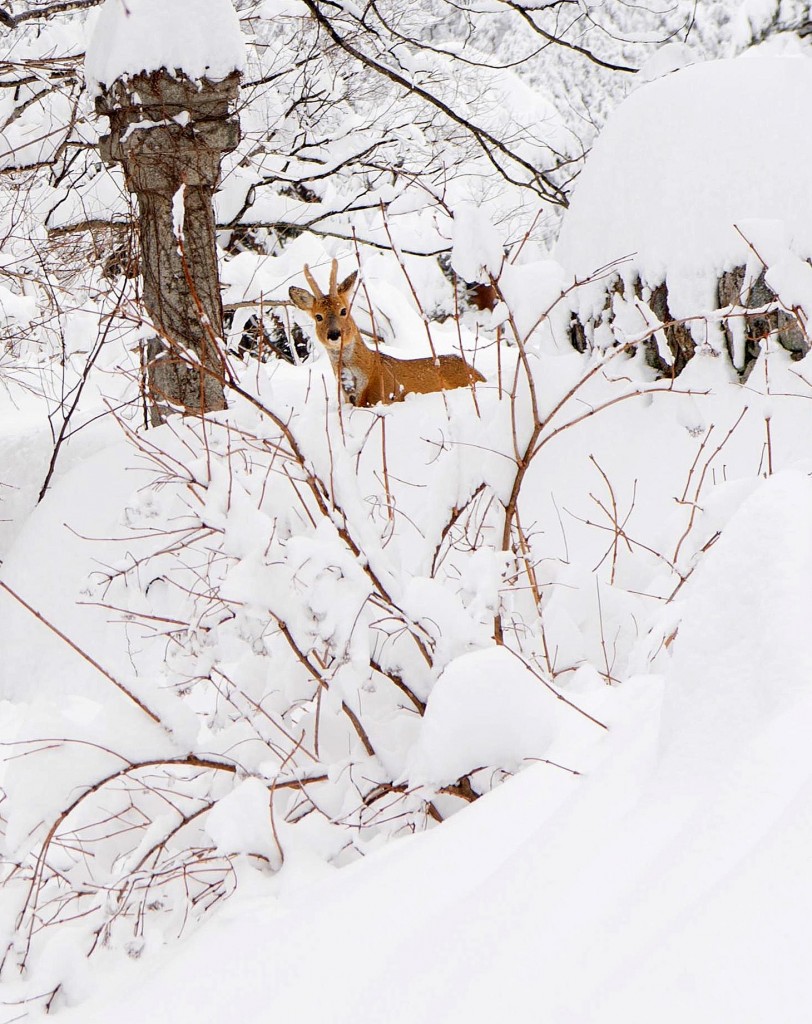
In the snow-covered mountains of Pyeongchang-gun, Gangwon-do on Feb. 13, a water deer, unable to find sustenance, sought refuge at a human dwelling, weary and famished. The compassionate homeowner welcomed the tired creature inside, providing warmth and nourishment. Despite the care lavished upon it, the deer succumbed to its hardships. The homeowner recounted the poignant sight of the deer, shedding silent tears as it sought solace in its final moments within the sanctuary of the room. (Image provided by the homeowner Gwon Tae-woo)
SEOUL, Feb. 24 (Korea Bizwire) –In a concerning development for wildlife conservation, the water deer (Hydropotes inermis argyropus) in South Korea are embroiled in a struggle for survival.
Classified as a vulnerable species by the International Union for Conservation of Nature (IUCN), the water deer shares its precarious status with renowned fauna such as lions, leopards, and koalas.
Despite this, in South Korea, the water deer is paradoxically considered a pest, leading to a complex and often detrimental relationship with humans.
The crux of the issue lies in the dual identity of the water deer within South Korea. Internationally recognized as a species at risk, it is domestically categorized as harmful wildlife.
This classification, established in July 1984, has legitimized the use of firearms for their culling. This dichotomy underscores the challenges in wildlife management, where conservation efforts clash with local agricultural interests.
Water deer are native to Korea and parts of China, with their presence in China being so threatened that restoration efforts are underway. In Korea, however, they are widespread, adapting to a range of habitats across the country.
The exact population of water deer in Korea is uncertain, with estimates wildly varying from 100,000 to as high as 1 million.

A baby water deer is stuck in the snow in Misiryeong, Inje-gun, South Korea, on Feb. 22 amid heavy snowfall in the mountains of Gangwon Province and Yeongdong Province. (Image provided by Inje-gun, Gangwon Province)
The National Institute of Biological Resources posits a figure of 450,000 based on forest area calculations, but these numbers are speculative at best. The ambiguity surrounding their population size is a significant hurdle in formulating effective conservation strategies.
The threats to water deer in Korea are multifaceted. Each year, tens of thousands fall victim to roadkill, with an estimated 60,000 deaths attributed to vehicle collisions. This staggering number is compounded by the annual hunting figures, which hover around 150,000 to 200,000.
The justification for such extensive hunting lies in the perceived threat to agriculture, with water deer accused of ravaging crops.
While the Ministry of Environment reports a decrease in crop damages from 2.59 billion won in 2018 to 1.17 billion won last year, the hunting numbers have not seen a proportional decline.
This persistent hunting, often incentivized by government bounties, has sparked debate over its economic rationality and ethical implications. The financial burden of bounties has, in some years, exceeded the cost of agricultural damage caused by water deer, raising questions about the efficacy and morality of such a policy.
The situation is further complicated by the inadequacy of compensation for farmers who suffer crop damage, revealing a misalignment in policy and practice.
Road accidents present another grim reality for the water deer, with the Korea Expressway Corporation highlighting that a significant majority of wildlife accidents involve these animals. The prognosis for water deer involved in such collisions is bleak, with only a small fraction recovering sufficiently to return to the wild.
This high mortality rate from road incidents underscores the need for improved wildlife corridors and road safety measures.

After four days of relentless snowfall in Goseong-gun, Gangwon-do, a water deer emerges to forage for food on February 23rd. (The image provided by Goseong-gun)
Conservationists argue for a more holistic approach to managing the water deer population, advocating for policies grounded in scientific research and ecological understanding.
They emphasize the importance of addressing the root causes of human-wildlife conflict, such as habitat destruction and fragmentation, rather than relying solely on culling.
Proposed solutions include the development of safer road infrastructures to prevent collisions, the implementation of non-lethal crop protection methods, and the exploration of habitat restoration projects.
These measures aim to mitigate the impact of human activities on water deer populations while also addressing the concerns of local communities affected by wildlife.
Lina Jang (linajang@koreabizwire.com)






